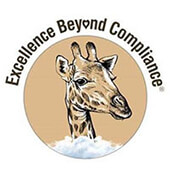Academy Contributors
 Getting Better All the Time Getting Better All the Time
Being Dedicated to the Animals Entrusted to Your Care
By James F. Gesualdi and Patricia A. Milito
To keep ahead, each one of us, no matter what our task, must search for new and better methods—for even that which we now do well must be done better tomorrow.
—James F. Bell
Zoological and aquarium organizations and their associated facilities vary greatly—in size, scope, funding, and other resources, as well as their resident animal species. Yet all should share a similar mission—one that emphasizes, above all else, the well-being of the animals in their care.
During a recent conversation with a fellow member of the zoological community, the discussion moved to larger organizations versus smaller ones. There are lessons to learn about enhancing animal welfare from studying the experiences of differently scaled organizations that are providing the highest quality animal care and welfare using the resources available to them.
Whether you are a larger organization or a smaller one, the ideology is the same: the well-being of the animals in our care is paramount, and we owe it to them to provide to the best of our ability, and to keep improving. This includes their enclosures, which should be as close to the natural habitat as is possible, maintained in such condition to be a safe environment, free of harm from themselves and the public, while providing safety to the public. It also includes their dietary intake and veterinary care, which needs to be the best it can be—and so much more.
All the bells and whistles do not make an organization or facility, whether large or small, one that meets and/or exceeds the necessary requirements of the Animal Welfare Act and Regulations, as well as governing accreditation standards.
What makes an organization or a facility one that accomplishes this is organizational dedication to the animals in their care, a willingness to observe, learn, and better themselves on a daily basis, no matter their size or means—one that approaches the day believing there is always something we can do better.
The Excellence Beyond Compliance approach is a very good start at setting the wheels in motion, as are the San Diego Zoo Global Academy courses. Perhaps, through a sort of mentorship, organizations that have met and even exceeded compliance can expand their interactions with those organizations—large and small—that are earnestly seeking guidance for the betterment of the animals in their care. In doing so, we act more effectively as a community in sustaining the lives of the animals, and assuring that each one of them is being provided good quality of life—today, tomorrow, and always. After all, it is about the animals.
Organizations and facilities need not judge themselves based on how much or how little they have available to work with, but rather on the heart and dedication they have every day in providing for their animals.
Animal Welfare Act Guidance from USDA
The U.S. Department of Agriculture Animal and Plant Health Inspection Service Animal Care unit has released three new Animal Care Aids from its Center for Animal Welfare. These three one-page documents relate to nondomestic cat diets, nutrition, and associated welfare concerns. As noted by the agency in releasing the documents, they are "not regulatory requirements." "[T]hey provide information, tips, and strategies that [the agency] hope[s] will help individuals provide great care for their animals." The agency announcement is available here:
Animal Welfare Act Guidance from USDA.
Feeding Nondomestic Cats discusses the best diet to keep your cats healthy and the amount of food that should be given daily, taking into consideration size, age, health, activity level, and reproductive status. The caloric content is also taken into consideration. This aid does suggest caution on homemade diets.
Feeding Nondomestic Cats
Tips and Calculations: Adding Calcium to Boneless Meat Diets for Nondomestic Cats discusses the amount of calcium to be added, recommendations for sources, and sample calculations.
Tips and Calculations: Adding Calcium to Boneless Meat Diets for Nondomestic Cats
Metabolic Bone Disease in Nondomestic Cats discusses the signs, diagnoses, and prevention of this disease.
Metabolic Bone Disease in Nondomestic Cats
Start where you are. Distant fields always look greener, but opportunity lies right where you are. Take advantage of every opportunity of service.
—Robert Collier
© 2019 James F. Gesualdi, P.C. The opinions expressed herein are solely those of the author. This is not, nor should it be construed as, legal advice.
For more information on Excellence Beyond Compliance®, visit excellencebeyondcompliance.com. |